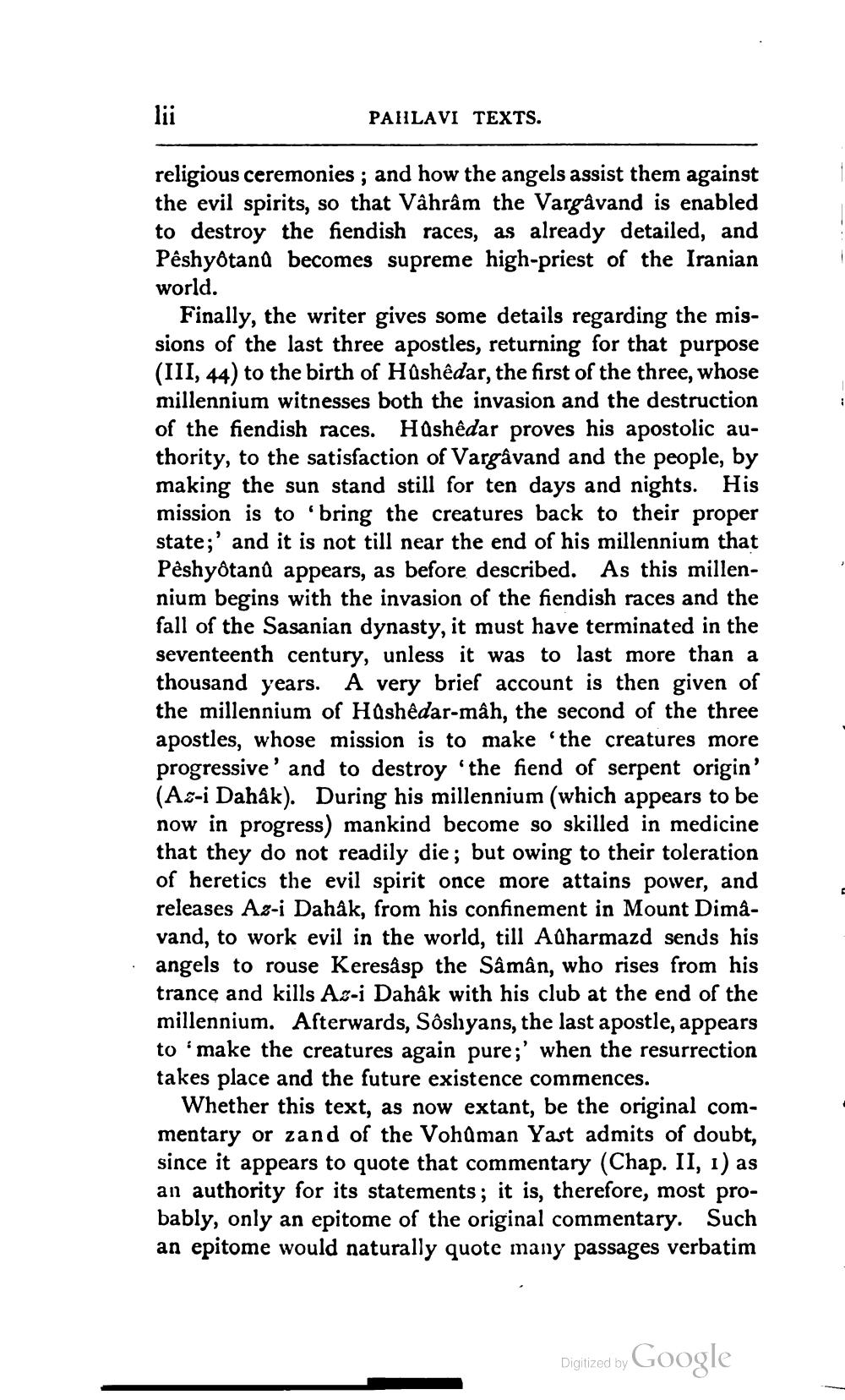________________
PAHLAVI TEXTS.
religious ceremonies ; and how the angels assist them against the evil spirits, so that Vâhrâm the Vargåvand is enabled to destroy the fiendish races, as already detailed, and Pêshyötand becomes supreme high-priest of the Iranian world.
Finally, the writer gives some details regarding the missions of the last three apostles, returning for that purpose (III, 44) to the birth of Hushêdar, the first of the three, whose millennium witnesses both the invasion and the destruction of the fiendish races. Hashêdar proves his apostolic authority, to the satisfaction of Vargâvand and the people, by making the sun stand still for ten days and nights. His mission is to bring the creatures back to their proper state;' and it is not till near the end of his millennium that Peshyôtanú appears, as before described. As this millennium begins with the invasion of the fiendish races and the fall of the Sasanian dynasty, it must have terminated in the seventeenth century, unless it was to last more than a thousand years. A very brief account is then given of the millennium of Hashedar-mâh, the second of the three apostles, whose mission is to make the creatures more progressive' and to destroy the fiend of serpent origin' (Az-i Dahâk). During his millennium (which appears to be now in progress) mankind become so skilled in medicine that they do not readily die; but owing to their toleration of heretics the evil spirit once more attains power, and releases Az-i Dahåk, from his confinement in Mount Dimavand, to work evil in the world, till Adharmazd sends his angels to rouse Keresåsp the Sâmân, who rises from his trance and kills As-i Dahâk with his club at the end of the millennium. Afterwards, Sôslıyans, the last apostle, appears to 'make the creatures again pure;' when the resurrection takes place and the future existence commences.
Whether this text, as now extant, be the original commentary or zand of the Vohůman Yast admits of doubt, since it appears to quote that commentary (Chap. II, 1) as an authority for its statements; it is, therefore, most probably, only an epitome of the original commentary. Such an epitome would naturally quote many passages verbatim
Digitized by
Digitized by Google




